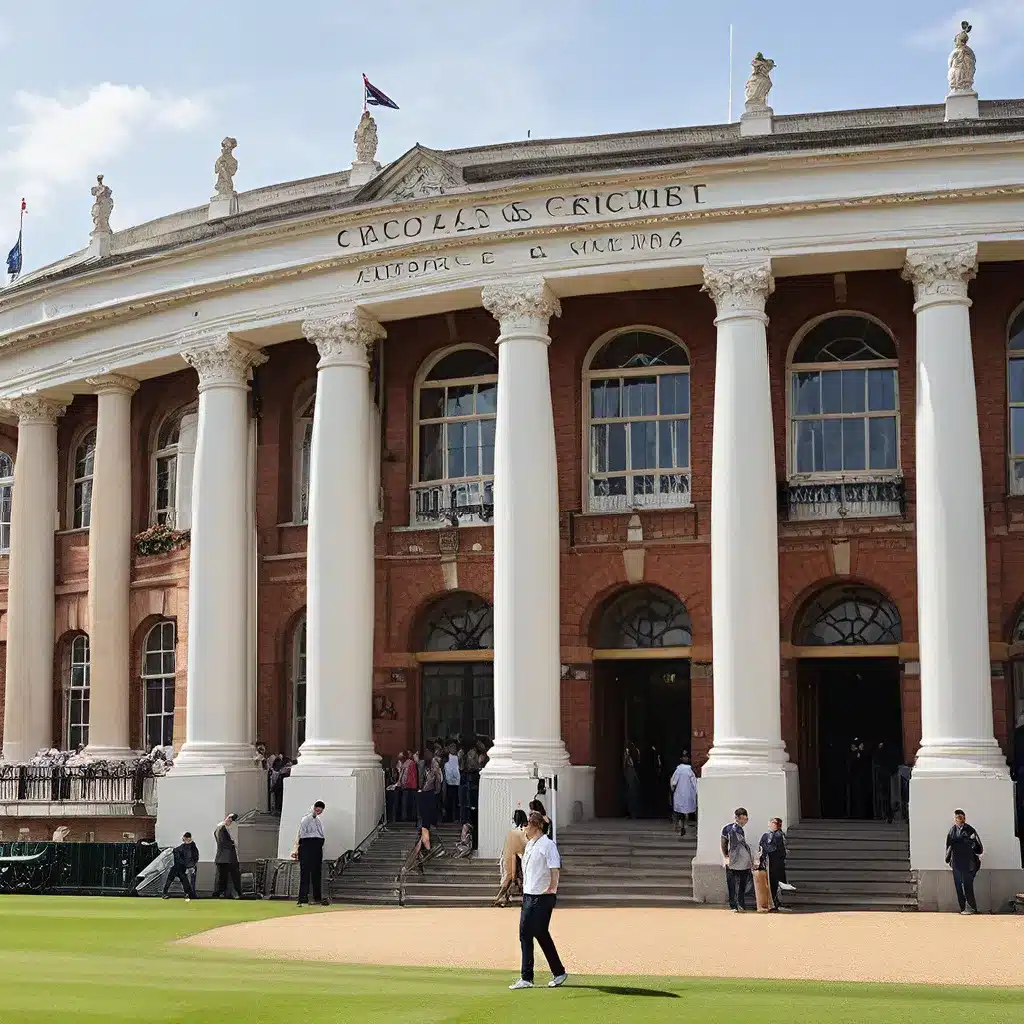
The Hallowed Grounds of Cricket Royalty
Lord’s Cricket Ground, often referred to as the “Home of Cricket,” is a legendary sports venue located in St. John’s Wood, London. Steeped in history and tradition, this iconic stadium has played a pivotal role in the evolution of the gentleman’s game, captivating cricket enthusiasts from around the world.
Nestled in the heart of the bustling city, Lord’s Cricket Ground boasts a timeless elegance that has endured for over two centuries. The stadium’s origins can be traced back to 1814, when it was established by the pioneering Thomas Lord, after whom it was later named. Lord’s vision was to create a dedicated cricket ground that would serve as the headquarters of the Marylebone Cricket Club (MCC), the sport’s governing body.
Over the years, Lord’s has witnessed some of the most memorable moments in cricket history. It has played host to numerous Test matches, One Day Internationals, and T20 Internationals, showcasing the skills of the world’s finest cricketers. The Ashes series, a fierce rivalry between England and Australia, has seen some of its most iconic clashes unfold on these hallowed grounds.
The Architectural Grandeur of Lord’s
The architectural design of Lord’s Cricket Ground is a testament to its rich heritage. The Pavilion, an iconic landmark within the stadium, is a Grade II listed building that exudes an air of regal splendor. Completed in 1889, the Pavilion’s imposing facade features red-brick construction and ornate Victorian-era detailing, creating a visual feast for the senses.
Visitors to Lord’s can explore the Pavilion’s interior, which houses an array of historical memorabilia and artifacts that tell the story of the game’s evolution. The Long Room, a revered space within the Pavilion, is a grand, wood-paneled hall where players, officials, and VIPs gather before and after matches. The room’s high ceilings, ornate chandeliers, and ornamental staircases evoke a sense of timeless elegance, transporting guests back to cricket’s golden age.
Beyond the Pavilion, Lord’s boasts a range of other architectural marvels. The Mound Stand, completed in 2004, features a contemporary glass and steel design that seamlessly blends with the stadium’s traditional aesthetic. The Media Centre, opened in 1999, is a striking structure that has become an iconic landmark, with its distinctive cantilevered overhang providing a unique vantage point for broadcasters and journalists.
The Traditions and Rituals of Lord’s
Lord’s Cricket Ground is not only a sports venue but also a repository of cherished traditions and rituals that have been passed down through generations of cricket enthusiasts. One of the most iconic traditions is the playing of the national anthem before the start of a match, a solemn moment that sets the tone for the day’s proceedings.
Another revered tradition is the Lord’s Honours Boards, which adorn the walls of the Pavilion’s famous Long Room. These boards display the names of cricketers who have achieved remarkable feats at the ground, such as scoring a century or taking five wickets in an innings. The inclusion of a player’s name on these hallowed boards is considered a prestigious accolade, cementing their place in the annals of the sport.
The ceremonial ringing of the bell before the start of a day’s play is another time-honored ritual at Lord’s. The bell, located outside the Pavilion, is rung by a distinguished individual, often a former cricketer or a renowned figure in the sport, signaling the beginning of the day’s action.
The MCC Museum and Its Treasures
The MCC Museum, located within the Lord’s Cricket Ground, is a treasure trove of cricket history and memorabilia. Established in 1864, the museum houses an extensive collection of bats, balls, trophies, and other cricketing artifacts that chronicle the game’s evolution over the centuries.
Visitors to the MCC Museum can embark on a captivating journey through the sport’s rich heritage. Highlights include the original Ashes urn, the first-ever cricket ball, and the personal effects of legendary cricketers such as Sir Donald Bradman and Sir Garfield Sobers. The museum also features interactive displays and multimedia exhibits that bring the game’s history to life, offering a truly immersive experience for cricket enthusiasts.
The Ongoing Modernization of Lord’s
Despite its deep-rooted traditions, Lord’s Cricket Ground is not immune to the demands of modern-day cricket. In recent years, the stadium has undergone a series of strategic renovations and expansions to enhance the spectator experience and keep pace with the evolving demands of the sport.
The Compton and Edrich Stands, completed in 2021, are the latest additions to the stadium’s infrastructure. These state-of-the-art facilities feature improved seating, hospitality amenities, and sustainable design elements, ensuring that Lord’s remains a premier destination for cricket enthusiasts.
Ongoing efforts to preserve the stadium’s heritage while adapting to the needs of the modern game have been a testament to the MCC’s commitment to ensuring that Lord’s remains a revered and relevant institution in the ever-changing landscape of international cricket.
Conclusion: Honoring the Past, Embracing the Future
Lord’s Cricket Ground stands as a remarkable testament to the enduring legacy of cricket. Its rich history, architectural grandeur, and deep-rooted traditions have made it a cherished and revered institution in the sporting world. As the game continues to evolve, the custodians of Lord’s are dedicated to preserving its timeless charm while embracing the demands of the modern era.
Whether you are a seasoned cricket enthusiast or a newcomer to the sport, a visit to Lord’s Cricket Ground is a must-experience for anyone captivated by the regal charm and storied history of the gentleman’s game. The hallowed turf, the iconic Pavilion, and the MCC Museum’s trove of treasures all combine to create a truly unforgettable journey through the annals of cricket’s illustrious past and its promising future.

